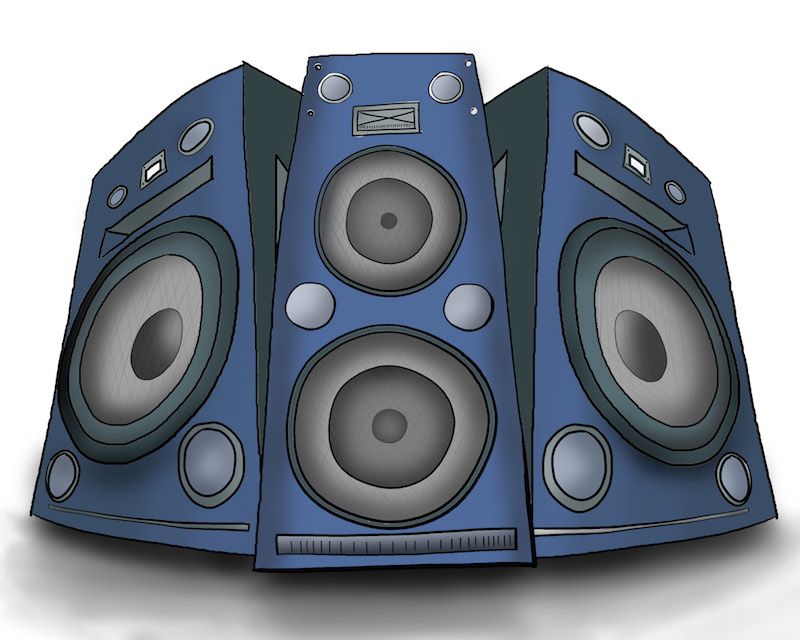From Bluesfest to nightclubs to hip-hop karaoke, there is an Ottawa hip-hop scene to be spoken of. But low attendance to shows can cause it to fall into the background.
While Ottawa has a diverse culture in itself, rap music seems to be a hidden part of this cultural mosaic.
An emerging identity
Alex Silas, whose album Roots came out in the summer of 2014, said the scene is in many ways starting to find a sound.
“Places like Montreal, Toronto, Vancouver, they have their sound, they have their identity in music and in hip hop. Ottawa specifically, I think is developing its own sound,” Silas said. “There’s a lot of experimentation happening and there’s this, like, whole identity that’s starting to emerge in Ottawa hip hop and Ottawa music. It’s cool to even be a part of that.”
Silas cited groups such as The Adding Machine, Bastards, and Poetic Elements as being a part of defining this sound.
Silas also talked about Atherton, a local MC he called “the godfather of Ottawa rap.” Atherton has performed across the city, and co-hosts hip-hop karaoke nights at the Elmdale Oyster House in Hintonburg.
Needing support
Ottawa rapper Corey Charron said there is definitely a rap scene in Ottawa, but attendance at events is often low.
The rapper appeared on this year’s BET cypher, a freestyle rap performance that’s part of the yearly BET hip-hop awards show.
Charron said a part of his success is being able to break out of the city and perform shows like this in other parts of Canada where they draw bigger crowds.
“At this point there’s not a huge market for it. I’ve toured the country with Wu-Tang, and Ottawa is one of the least supportive cities in terms of attendance. There’s way more people coming out in Montreal, Toronto, even Edmonton,” he said.
When asked what a city like Toronto has over Ottawa, Charron said Toronto has a more diverse scene.
“They’ve had a lot of people come up like Choclair, Maestro, Kardinal Offishall, a lot of the godfathers of Canadian rap came from there,” he said. “Ottawa, there definitely is a rap scene, I feel like a lot of the artists know each other but there isn’t enough support here locally. Toronto has the King of The Dot movement where Ottawa doesn’t really have a movement to follow.”
The elements of Ottawa’s scene
Both Silas and Charron talked about similar elements tying the scene together. When asked about which venue supports the scene the most, both replied with “Ritual.”
Ritual hosts hip-hop DJ nights, but also acts as a venue for local performers. Rap artists coming through Ottawa most frequently perform there, with Freddie Gibbs recently filling the club with rap fans.
Urban art festival House of Paint focuses around the original four elements of hip hop: rap, DJing, dance, and graffiti.
Executive director of the festival, Sabra Ripley, said an important part of the scene is realizing that hip-hop doesn’t confine itself to the nightlife.
“One of the things that’s happened with hip hop over the years is that it’s been kind of tucked away into bars and clubs. If you’re in, say, New York as much as you’ll find hip-hop in bars and clubs, you’ll find a lot of jams or hip-hop in the park,” Ripley said.
A collection of communities
Ripley also said Ottawa’s scene has a wide variety of sounds due to the existence of multiple communities within the rap scene.
“Ottawa’a a big enough city that you’re going to find variety now. That would maybe be less true if you go back 20, 30 years, but hip hop is pretty prevalent through Ottawa’s youth culture. It’s big enough that there are a few different scenes . . . There is no one central thing that guides it,” Ripley said.
House of Paint was established in 2003. At that time, the space under the Bronson overpass became a legal space for graffiti.
House of Paint began with a “jam” at that location that featured rap battles, dancing, and graffiti. The festival has been running annually since, and also co-ordinates hip-hop events year-round.
Going outside of the city
Ripley said despite some local support, artists sometimes find it hard to break out in Ottawa.
“I think sometimes people hit a ceiling and then choose to leave the city for a bigger place, often Toronto or Montreal, in order to be able to take some next steps. I think some people take themselves out of the city in order to be able to get a big creative break,” he said.
When asked about this, Silas said he had considered leaving the city before.
“I was actually supposed to move to Toronto about a year ago and I was about to go, it was all set up. I took at least a week to think about it, and I changed my mind,” he said. “A big part of that was I felt like I wanted to keep making music in Ottawa, keep being a part of this scene.”






